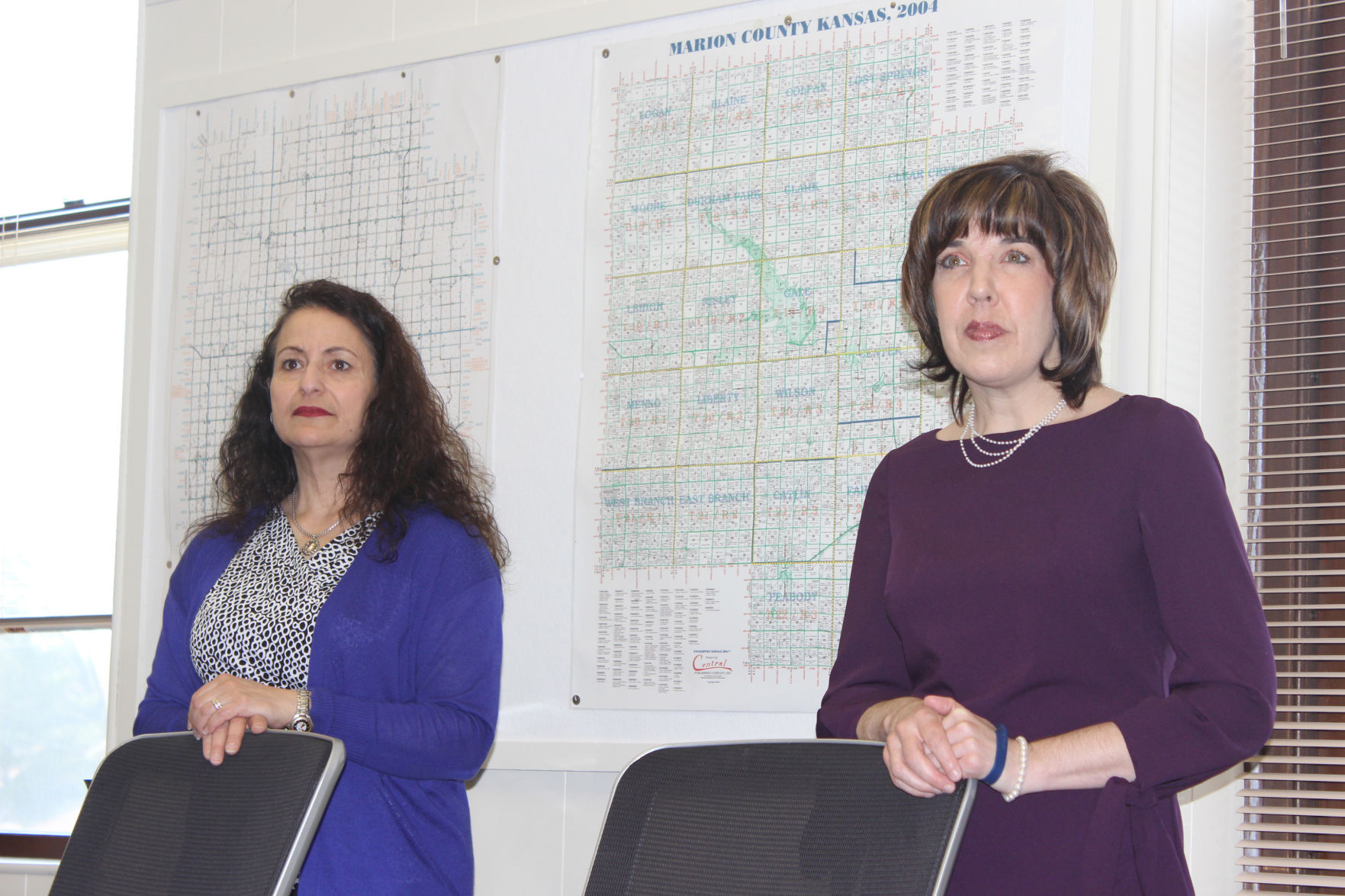Marion County loan helps sheriff replace antiquated communications equipment
Dispatcher Sandy Scheele admits there was a time she worried about the law enforcement officers responding to incidents on Marion County’s rural roadways.
Because of the department’s antiquated equipment, there were areas in the county that were like black holes for radio signals. And if an officer was responding in one of those dead spots, Scheele couldn’t hear them.
That changed four months ago, thanks to a U.S. Department of Agriculture Rural Development loan.
The Kansas county of 12,200 people received a $202,000 loan to update its 20-year-old equipment. Officials used the funds to purchase 800 megahertz radios and dispatch system for the county’s first responder departments.
“We used to have a lot of radio issues,” Scheele told Anne Hazlett, the USDA assistant to the secretary for Rural Development, during Hazlett’s stop to the county April 24. “We’re not having that now. When they are at a traffic stop, we don’t have to worry. We know we can hear them now. That stress level has gone down a lot.”
Old infrastructure, isolation and broadband access are among the issues Hazlett, an Indiana native and Kansas State University graduate, said she has been hearing since she took the post last year.
Rural Development programs help address those issues, she said, and last year alone, the USDA invested $1.5 billion into rural areas through its Community Facilities Direct Loan program. In February, the agency announced it was funding $563,500 for projects in Kansas. Anthony, population 2,200, received funding for new storm sirens and in Frankfort, population 700, a building where meals are prepared and served to the elderly, was renovated.
Marion County’s emergency equipment needs were also was on that list, and Hazlett, who was on her way to a rural opportunities conference in Newton, and she made a stop to see how the system was working.
“It’s also a great opportunity to really interact with several other community members and have a first-hand understanding of their needs whether it is infrastructure, workforce training—all those pieces that go into creating prosperity in these places in the future,” she said.
Addressing needs
Before taking a tour of the county’s dispatch center, Hazlett and her entourage, which included USDA Rural Development Kansas Director Lynne Hinrichsen, met in the courthouse, learning more about Marion County’s needs.
Marion County Sheriff Robert Craft said the radio equipment has been a boon for the county. Surrounding counties already are using the 800 MHz system, and it previously had been difficult to communicate with them.
It’s important to keep these programs funded, he added.
“There are a lot of small, rural areas that are having a hard time doing what they need to do,” he said.
Broadband access
Marion County Administrator Roger Holter said getting basic phone service to remote areas was once the push, but in today’s environment, it is no longer the paramount need.
“It is getting rural connectivity to the outlining areas because, let’s face it, our biggest driver is still agriculture, and we have to have the home office connected and that is where our biggest challenge is,” Holter said.
Most of the county doesn’t have high-speed internet access, with many areas with speeds of just 5 Megabits per second. That creates a problem for growing the community, Holter said.
“We have basically two places where we have good fiber optics and can get 100 Mbps, but it is just in the business district here in Marion and a small portion of the business district in Hillsboro. The rest of the county is very limited on access.”
Hazlett said there is $600 million in new funding in the 2018 spending bill. It is meant for communities with limited services. According to the guidelines, 90 percent of the households served by the project must be unserved or underserved and can’t have 10/1 Mbps broadband access, among other specifications.
Hazlett added broadband can be a foundational solution to other problems that Marion County faces. For example, the county could gain access to telemedicine.
“It would open some doors,” Craft said.
Hazlett said Marion was an example of how a robust Rural Development program strengthens rural areas.
“Whether we are talking about changes in resource levels or policy, one thing that remains a constant need for is partnership,” she said. “And that is what I was able to see today. We have a group of community members who are coming together to tackle challenges, and we want to come in and assist them from a federal level with our people and our programs to help them achieve that vision for their future.
“These programs are a high priority for many folks,” Hazlett said.
Amy Bickel can be reached at 620-860-9433 or [email protected].


